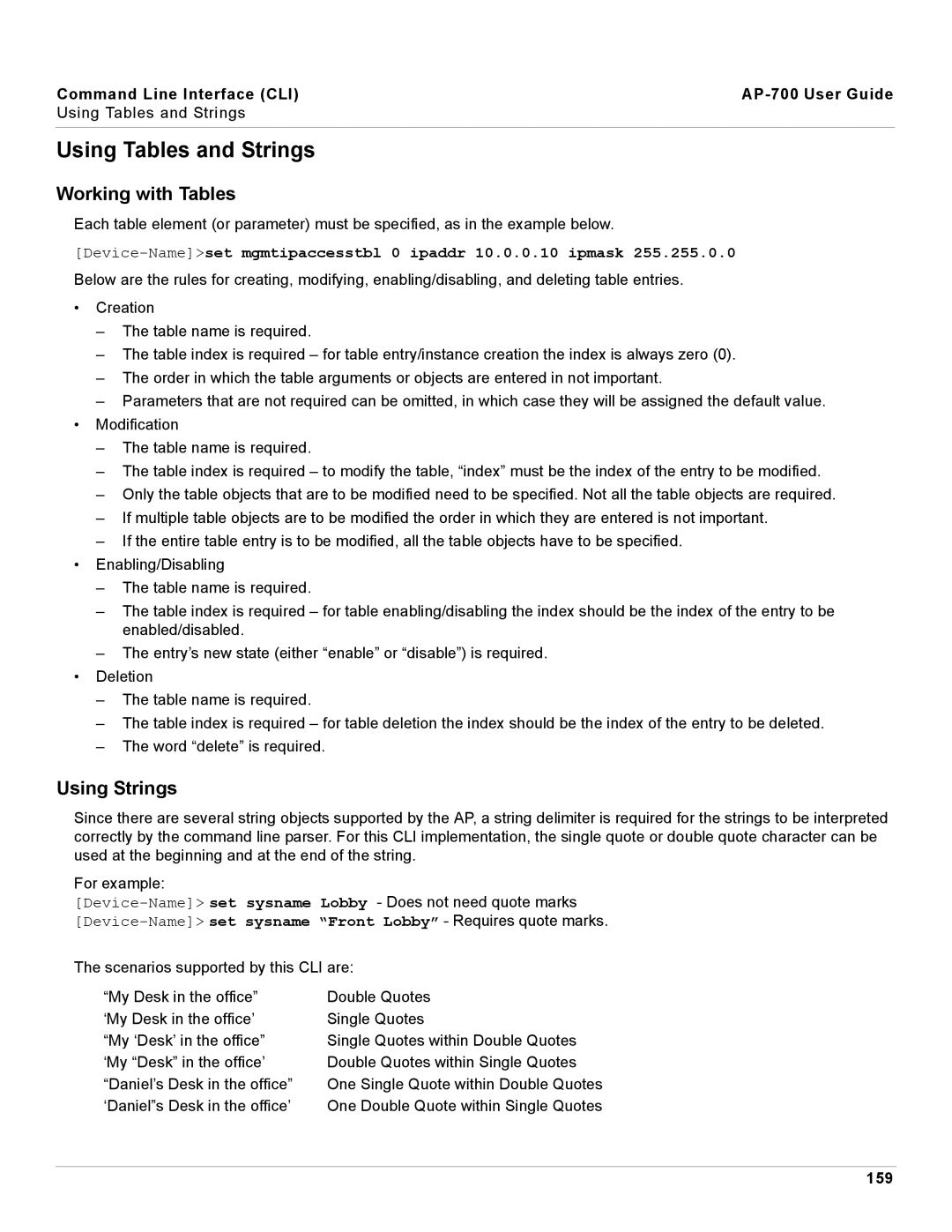
Command Line Interface (CLI) |
|
Using Tables and Strings
Using Tables and Strings
Working with Tables
Each table element (or parameter) must be specified, as in the example below.
Below are the rules for creating, modifying, enabling/disabling, and deleting table entries.
•Creation
–The table name is required.
–The table index is required – for table entry/instance creation the index is always zero (0).
–The order in which the table arguments or objects are entered in not important.
–Parameters that are not required can be omitted, in which case they will be assigned the default value.
•Modification
–The table name is required.
–The table index is required – to modify the table, “index” must be the index of the entry to be modified.
–Only the table objects that are to be modified need to be specified. Not all the table objects are required.
–If multiple table objects are to be modified the order in which they are entered is not important.
–If the entire table entry is to be modified, all the table objects have to be specified.
•Enabling/Disabling
–The table name is required.
–The table index is required – for table enabling/disabling the index should be the index of the entry to be enabled/disabled.
–The entry’s new state (either “enable” or “disable”) is required.
•Deletion
–The table name is required.
–The table index is required – for table deletion the index should be the index of the entry to be deleted.
–The word “delete” is required.
Using Strings
Since there are several string objects supported by the AP, a string delimiter is required for the strings to be interpreted correctly by the command line parser. For this CLI implementation, the single quote or double quote character can be used at the beginning and at the end of the string.
For example:
The scenarios supported by this CLI are:
“My Desk in the office” ‘My Desk in the office’ “My ‘Desk’ in the office” ‘My “Desk” in the office’ “Daniel’s Desk in the office” ‘Daniel”s Desk in the office’
Double Quotes
Single Quotes
Single Quotes within Double Quotes Double Quotes within Single Quotes One Single Quote within Double Quotes One Double Quote within Single Quotes
